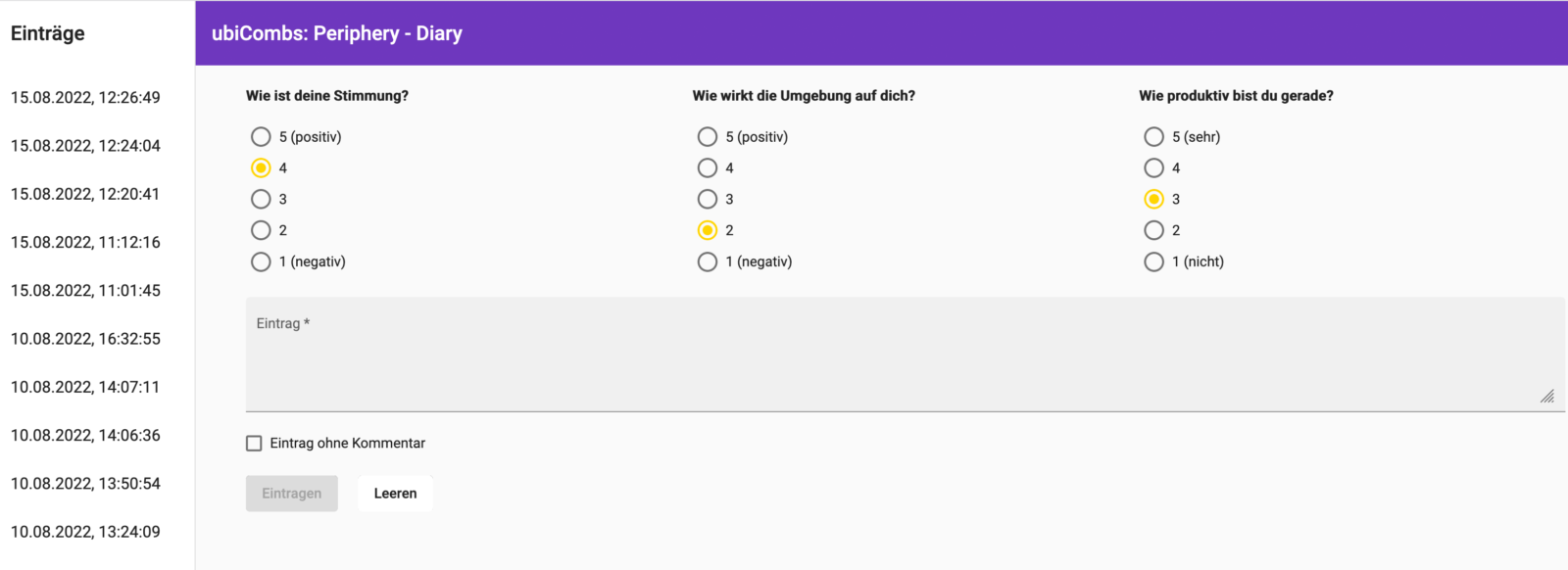Applied methods in Periphery
In the Periphery experiment we investigate the impact of an ambient information system (AIS) in a work environment. The focus is on habituation and learning processes of information displayed in the periphery of attention during work at a personal computer. The responsive room reacts to human actions (spatial position, movement of arm and head, heart rate and skin conductance) with changes in light, sound, vibration, and air stream. We invited 20 subjects to go about their daily work for an hour and a half.
Qualitative data collection
- At moments when the subjects behaved in a particular way (e.g., lingering for long periods of time, rapid changes, etc.) and additionally at regular intervals, the participants were automatically asked to document their state of mind and feelings towards the room in a digital diary (see image).
- At the end, each participant was asked to conduct an interview.
Quantitative methods of measurement
For the sake of gathering quantitative information, we relied on different sources of sensory input:
- Camera-based tracking (fixed on ceiling): presence, location, specific area detection (around, work, chill, outlet), motion
- Biofeedback enabling wristband (E4): heart rate, Galvanic Skin Response (GSR), wrist motion (acceleration)
- Head gear (red baseball cap): head movement and view direction (acceleration, gyroscope)
- Timer: for thresholds, ranges and timeouts


